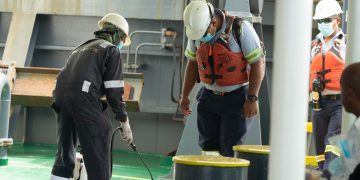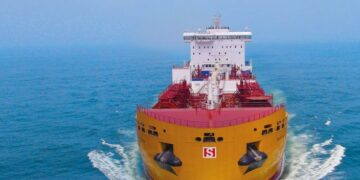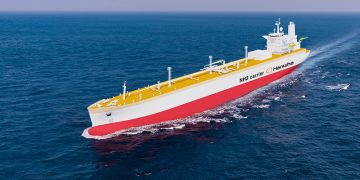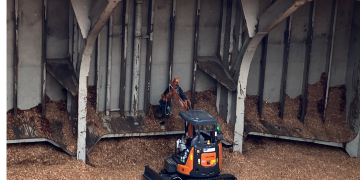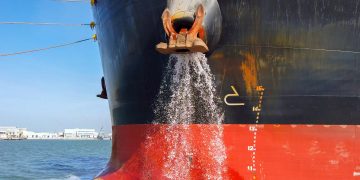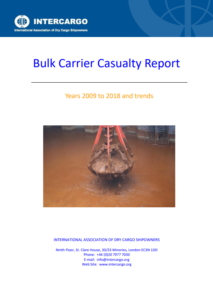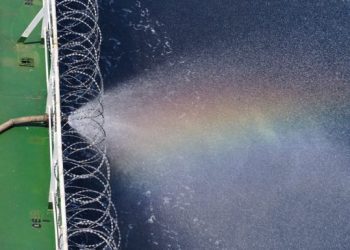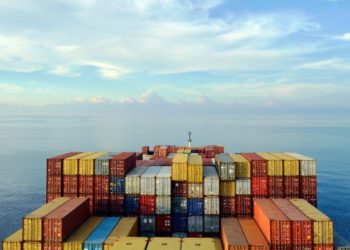Intercargo published its Bulk Carrier Casualty Report for 2018. Intercargo calls all stakeholders to remain vigilant as cargo liquefaction continues to pose a major threat to the life of seafarers. The report focuses on bulk carrier casualties from 2009 to 2018 and provides an analysis on statistics and trends over the last 10 years.
Significant findings from the report resulted to:
- 18 Handysize bulk carriers were lost, representing 37.5% of the total 48 casualties reported.
- 11 Handymax vessels were lost, representing 22.9% of the total without a clear pattern of improvement through the years.
- Supramax bulkers suffered 8 ship losses, representing 16.7% of the total, with 5 losses related to suspected cargo failure (liquefaction) and consequential loss of 72 lives.
- Capesize ships suffered 7 ship losses, or 14.6% of the total.
- 4 Panamax bulk carrier losses equate to the lowest number of casualties, representing 8.3% of the total.
- In terms of annual ship losses, after peaking in 2011, a reduction of ship losses was observed thereafter.
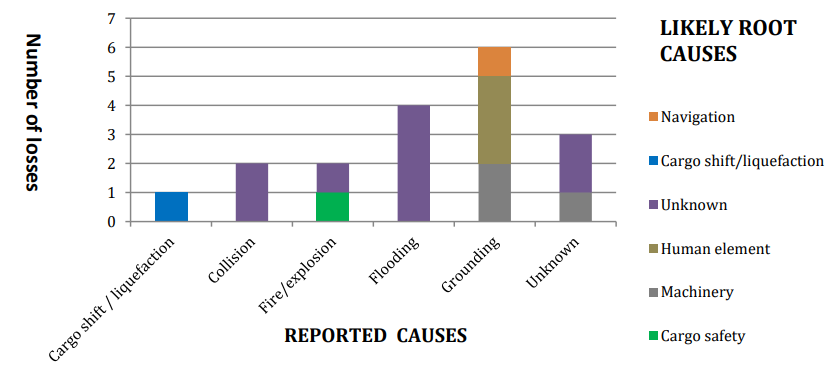
As presented above, the likely root causes of the vessels being reported were:
- Navigation;
- Cargo shift/liquefaction;
- Human element;
- Machinery;
- Cargo safety;
- Unknown.
According to the report, 48 bulk carriers over 10,000 dwt have been identified as total losses over this 10 year period.
Cargo failure and liquefaction, continue to be a major concern for dry bulk shipping.
There were 9 casualties of suspected cargo failure among the 48, consisted of 6 bulk carriers carrying nickel ore from Indonesia, 2 vessels with laterite (clay) iron ore from India and 1 with bauxite from Malaysia, and there were 101 lives lost associated with those 9 casualties against a total of 188 lives for all the 48 casualties.
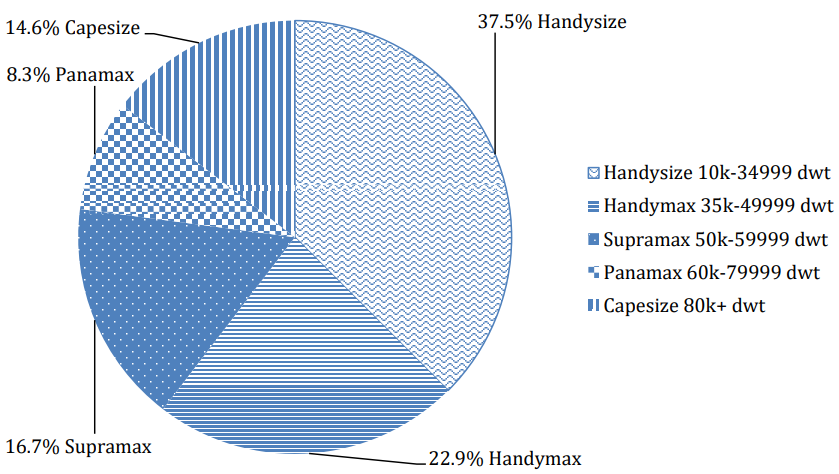
The reports proposes that ship operators should be extremely careful when loading during a wet season, as currently being experienced in certain parts of South East Asia, however it is paramount that the shippers and the local authorities fulfill their obligations as required by the IMSBC Code.
Some details further highlight the issue of slow reporting:
- The highest loss of life has been attributed to cargo failure (liquefaction), totalling 101 lives lost from the 9 casualties. Two (2) investigation reports of those 9 cases have yet to be submitted to IMO.
- The most common reported cause of ship losses has been grounding, totalling 19 losses among the 48 cases. Six (6) investigation reports of those 19 cases have not been submitted to IMO.
- Six (6) ships lost with unknown causes claimed 61 lives. Five (5) investigation reports of those 6 cases have not been submitted to IMO.
- Reported flooding led to losses of 6 ships. No investigation report of those 6 cases has been submitted to IMO. INTERCARGO stresses the importance of timely submission of the casualty investigation reports to IMO from the relevant flag States, as a means of identifying the causes of the incidents and enabling corrective actions.
Concluding, Intercargo highlights the importance of timely submission of the casualty investigation reports to IMO from the relevant flag States, as a means of identifying the causes of the incidents and enabling corrective actions.
For more information, you may click the PDF herebelow









